The #BlackFridayParking Exception That Proves the Rule
(Source: Author.)
The defining feature of…well, really North American cities as a whole, but especially suburban retail, is parking. A truly prodigious amount of parking. Pick any mall or shopping center, and the sea of parking easily takes up more space than the buildings themselves.
And even on the busiest shopping day of the year, it’s far from fully occupied. This was the inciting observation for #BlackFridayParking, a Strong Towns tradition ever since 2013 in which we invite our members and social media followers to hit up one or more far-from-full parking lots on Black Friday and document the sheer waste. Planners, defending the arbitrary parking quotas that exist in almost every city’s zoning code, will tell you, “Well, when Black Friday comes around, those retailers are going to need every one of those parking spaces.” The reality, usually, is that they don’t.
Usually.
Of course, no rule of thumb works all of the time, and so if you’re looking for a “gotcha” exception I’m sure you can find a shopping center with a nearly full parking lot on Black Friday. I’ve got one such example near where I live—but it’s actually the exception that proves the rule. The rule, in this case, is that having “enough” parking is always going to be less important than creating a place people want to be.
The Exception
The area in question is a giant retail complex on the edge of Sarasota, Florida, called University Town Center, or UTC. UTC is centered on one of only a handful of new indoor shopping malls built in all of North America in the last fifteen years. Surrounding the mall are a series of big-box retail power centers that serve more quotidian shopping needs, along with clusters of restaurants and smaller chain retailers. Parking is pretty tight at all of them on a typical Saturday, let alone on Black Friday. I’d estimate the lots hit 80% to 90% full. I’ll head there on a Target or Petco run semi-regularly, and while I’ve never outright failed to find a space, it’s common to have to circle for a few minutes or to end up parking a distance from the store equivalent to a couple city blocks.
UTC is what it looks like when the suburban development pattern is firing on all cylinders. We’re not talking about the decline phase of the Growth Ponzi Scheme. We’re talking about when the roads are still smooth, the landscaping is pristine, the retail spaces are filled and the stores are raking in money. Everything about this place is cranked up to 11. It’s the kind of place where three parallel left-turn lanes connect giant stroad to giant stroad, the kind of place where the state DOT casually drops $80 million on a diverging diamond interchange largely to serve UTC and its traffic. The traffic is, genuinely, intense. (It doesn’t help that the area is utterly unwalkable and unbikeable, and transit service is a joke.)
I’ve been very critical of UTC and the associated infrastructure over the years, and on balance, I still am. It’s an utterly car-centric environment, corporate and slick, and within that context, the developer’s stabs at placemaking and walkability (like a strip of restaurants with sidewalk cafe seating) are awkward, like some sort of uncanny valley version of urbanism. And there is just so, so much asphalt. That so much of the parking is routinely full is not a testament to any sort of economy in terms of the complex’s design or use of space, but rather, the simple fact of how much regional retail demand this one complex manages to hoover up.
Aerial photo of UTC area, showing fairly high parking utilization on a typical day. I would venture that it’s more full than this on weekends.
What Would You Trade Extra Parking Spaces For?
I’ve got to give credit where credit is due, though. Because a couple years ago, the owners of UTC made a telling choice. They actually took away a big chunk of the parking lot at UTC West, a retail power center anchored by a Super Target. They replaced it with The Green, a grassy lawn for events and casual hanging out. Not only did they make the decision to do this at a shopping center where parking is actually tight, but they did it at the central entrance, diverting cars around the Green on awkward, circuitous routes, no doubt adding to driver stress.
They did this for a very obvious reason: the Green draws in more people than the added hassle of parking repels. It’s a net gain. It’s a nice place to hang out. It connects the strip of big-box stores to the growing strip of middlebrow chain restaurants, encouraging visitors to make an outing of it.
I don’t need to marshal urbanist ideology or put on my smugly superior planner hat to make the judgment that this outdoor recreational space is of higher value, at the margins, than the parking it supplanted. The developer already demonstrably arrived at that conclusion themselves, for purely selfish business motives.
This time of year, UTC—to reiterate, a paint-by-numbers shopping center that is pretty much the opposite of my natural habitat—doubles down on its efforts to warm even my Grinch-like heart. They put up a staggering amount of lights, a gigantic tree in the middle of the roundabout, and they deck out the aforementioned Green with festive decor. They host holiday movie nights in, yep, another chunk of the parking lot.
I took a stroll around the other night and witnessed throngs of people hanging out along the generous sidewalk between the restaurant strip and oversized (but attractively lit and landscaped) stroad. Groups of teenagers. Families with hyperactive toddlers. Couples hand in hand. Fake snow swirled and Mariah Carey blasted from rooftop speakers. Fireworks that began while I was wandering around seemed to catch everyone off guard—the whole crowd oohed and aahed as a couple hundred heads turned at once.
It wasn’t as nice, as organic or diverse, as downtown, and I wouldn’t choose it over downtown, but it was unquestionably a place to be on a Saturday night in November, if not the place.
Let me belabor the point. They took away parking, in a place that is utterly designed around the car and where the parking actually does come close to filling up. The place draws more people during this transformation. The stores make more money. The restaurants are more full. To the extent that parking gets harder, it’s clearly not driving customers away. If this tradeoff makes sense here, in the belly of the beast of suburban consumerism, it makes sense anywhere.
This is not a revelation. It should be obvious. In all of history, no place has ever been beloved for its abundance of free, convenient parking. That might be a perk, but it’s not the main attraction. The flip side of this is that there are countless places where parking is a royal pain in the butt, but that are enough of a draw that customers will happily come anyway. We all know such places.
Parking is a liability, not an asset. It generates no value directly; it merely makes possible the commerce that does. You need it, because your customers arrive in cars. But you should strive to waste as little land as possible on it, and have it interfere as little as possible with the experience of being in a place. And local regulations should allow that act of smart business judgment to occur.
There’s a continuum of steps you can take, from merely clawing back a little bit of space for people instead of their cars. In the transformation UTC undergoes at Christmas time, with a little imagination you can see a blueprint for the transformation it could undergo permanently. Out of the rows of parking, carve a grid of narrow streets. Fill in the spaces with buildings. Add a mixed-use component, with apartments on top of retail. A couple more plazas like The Green. A permanent place to have your movie night. Here’s a very quick, rough mockup map of what that might look like in its end state, maybe a couple decades from now:
It’s also extremely obvious that this transformation, if it occurred, would not kill the place but would make it more successful than ever. Just as it’s obvious that the annual Christmas shindig adds value. People, not parked cars, are the indicator species of a successful place. Even in a plain-vanilla shopping center that, for a few fun weeks out of the year, gets its cherry on top.
GET READY FOR #BLACKFRIDAYPARKING!
Your parking lots are too big to fill, even on the busiest shopping day of the year. Here's how you can help use that land for something greater.

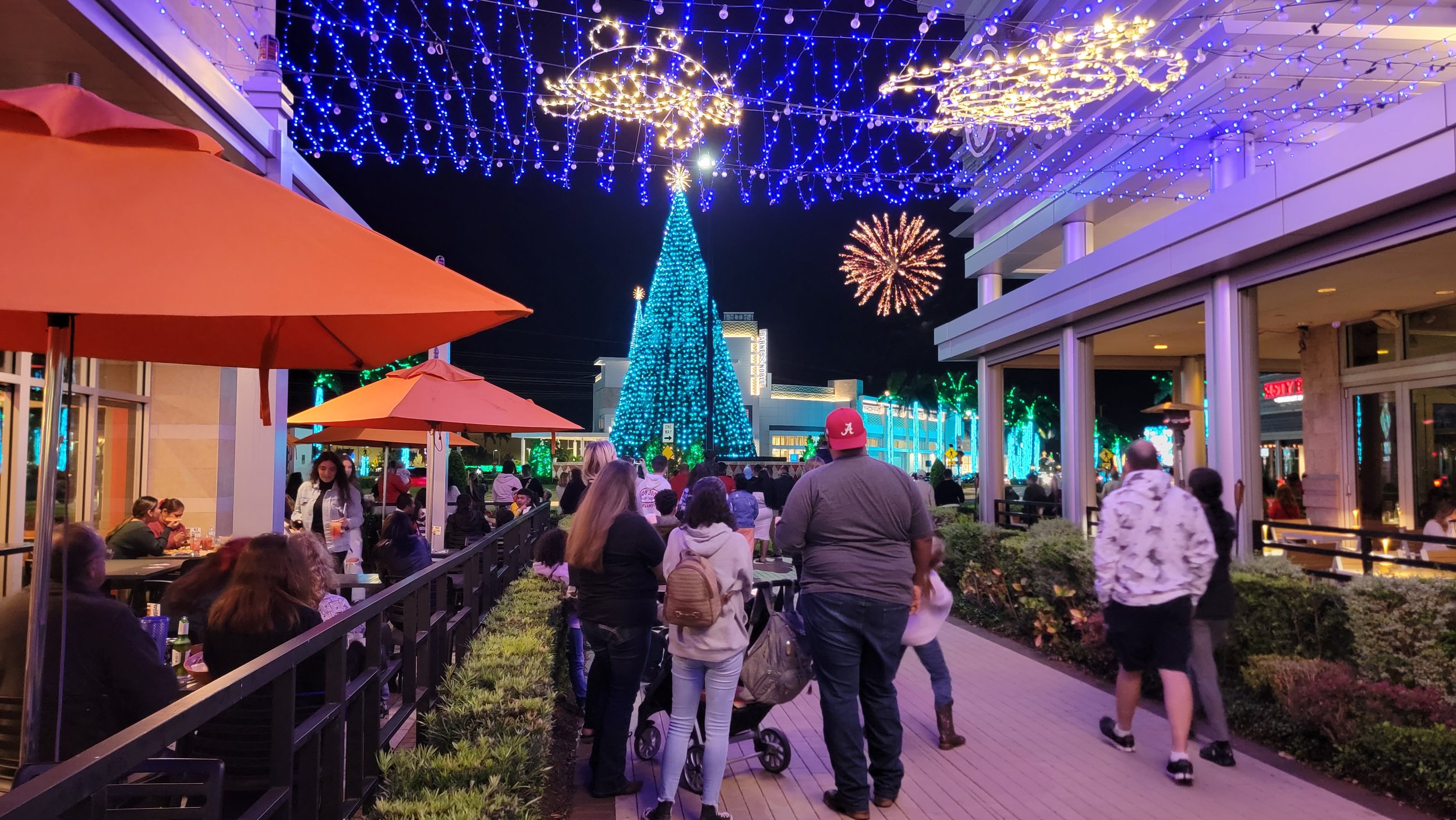


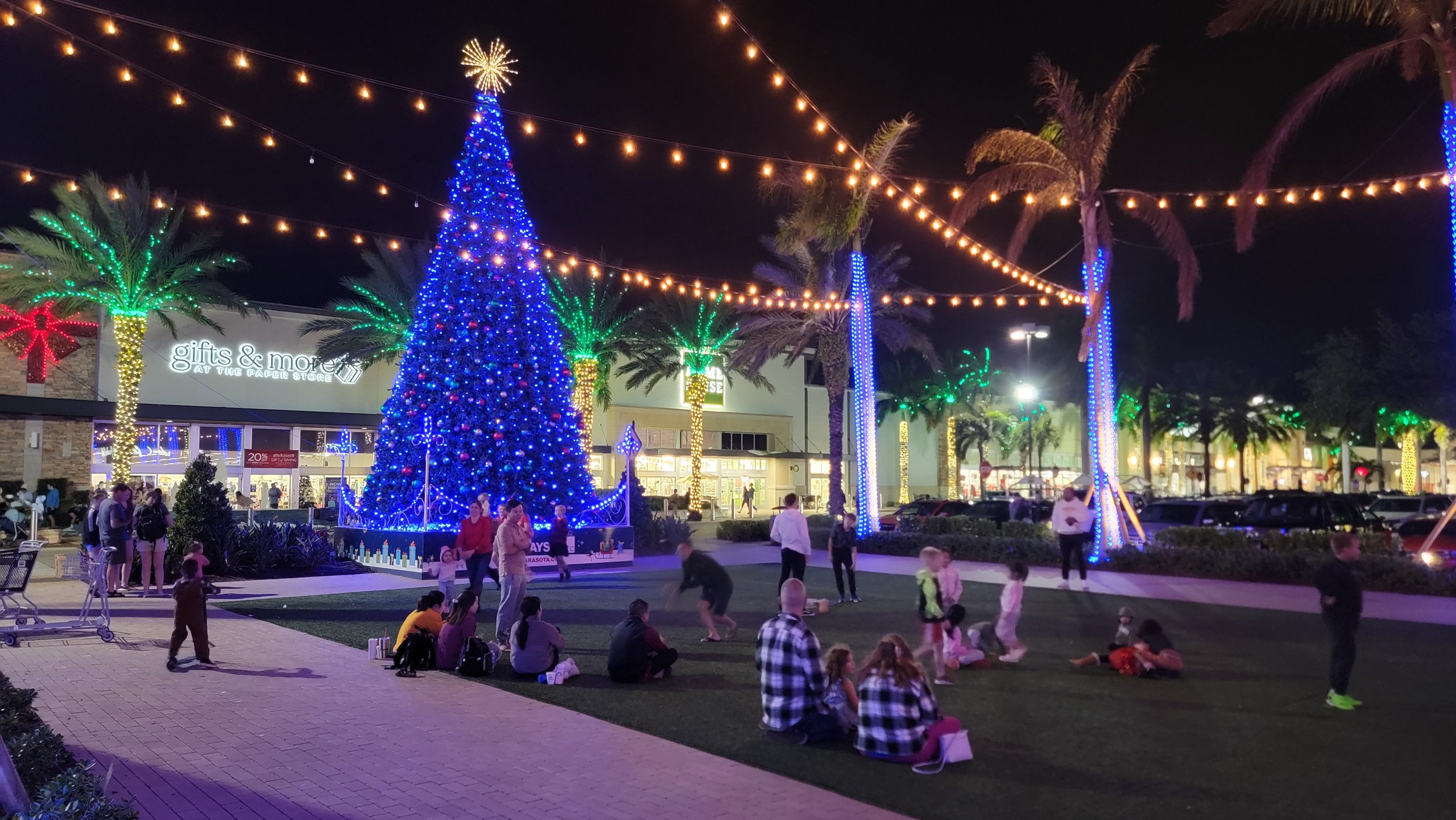
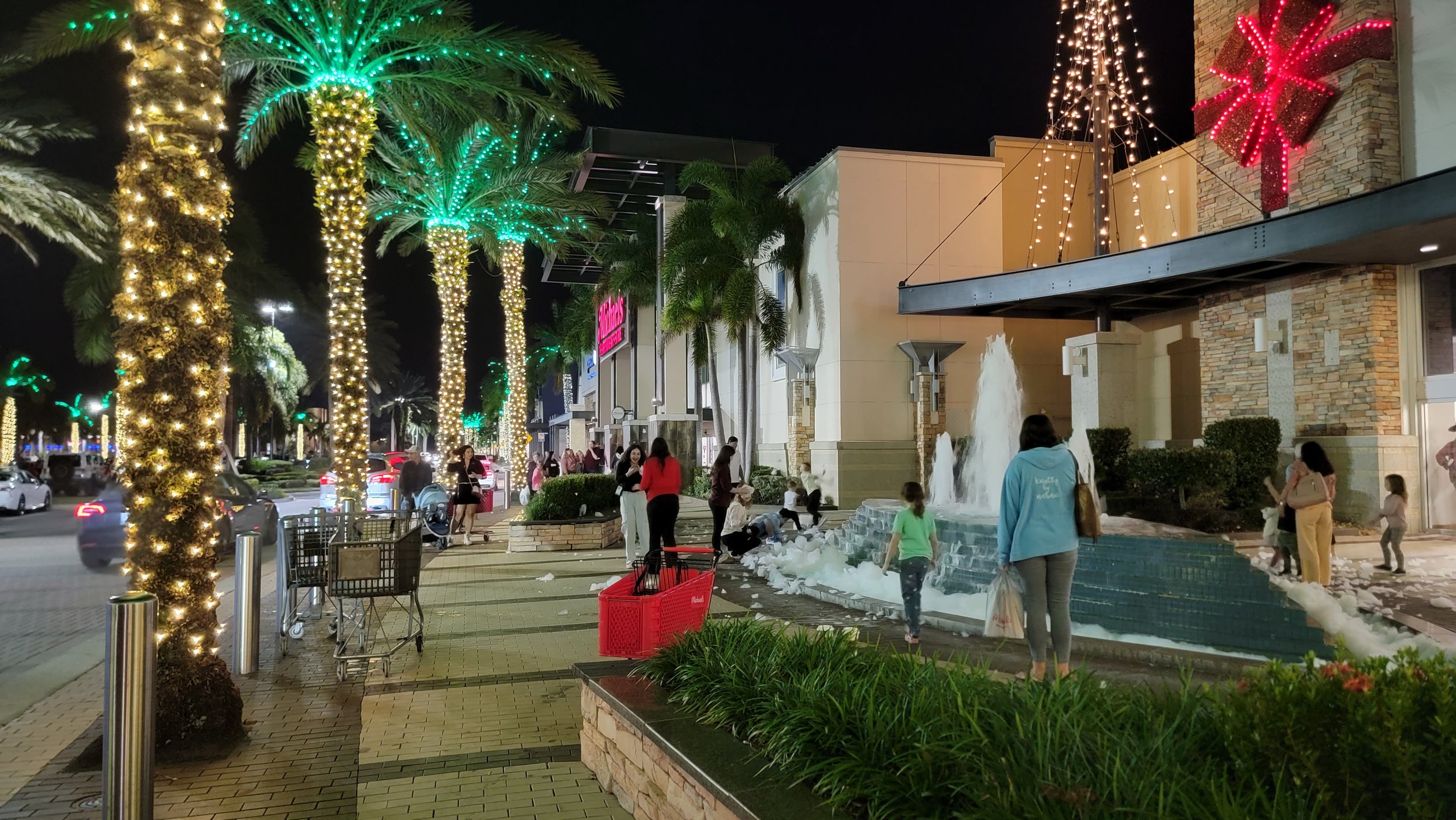
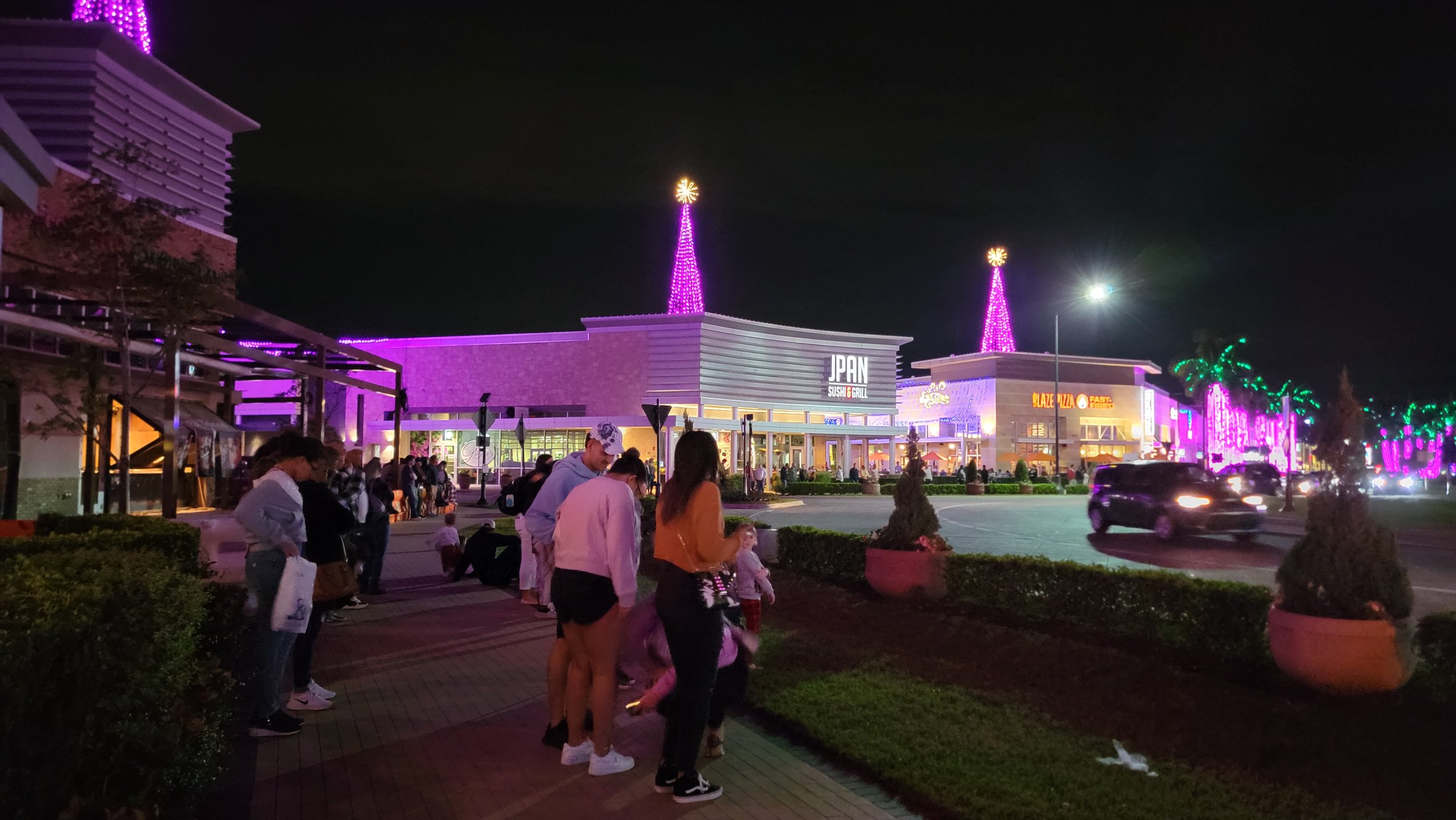
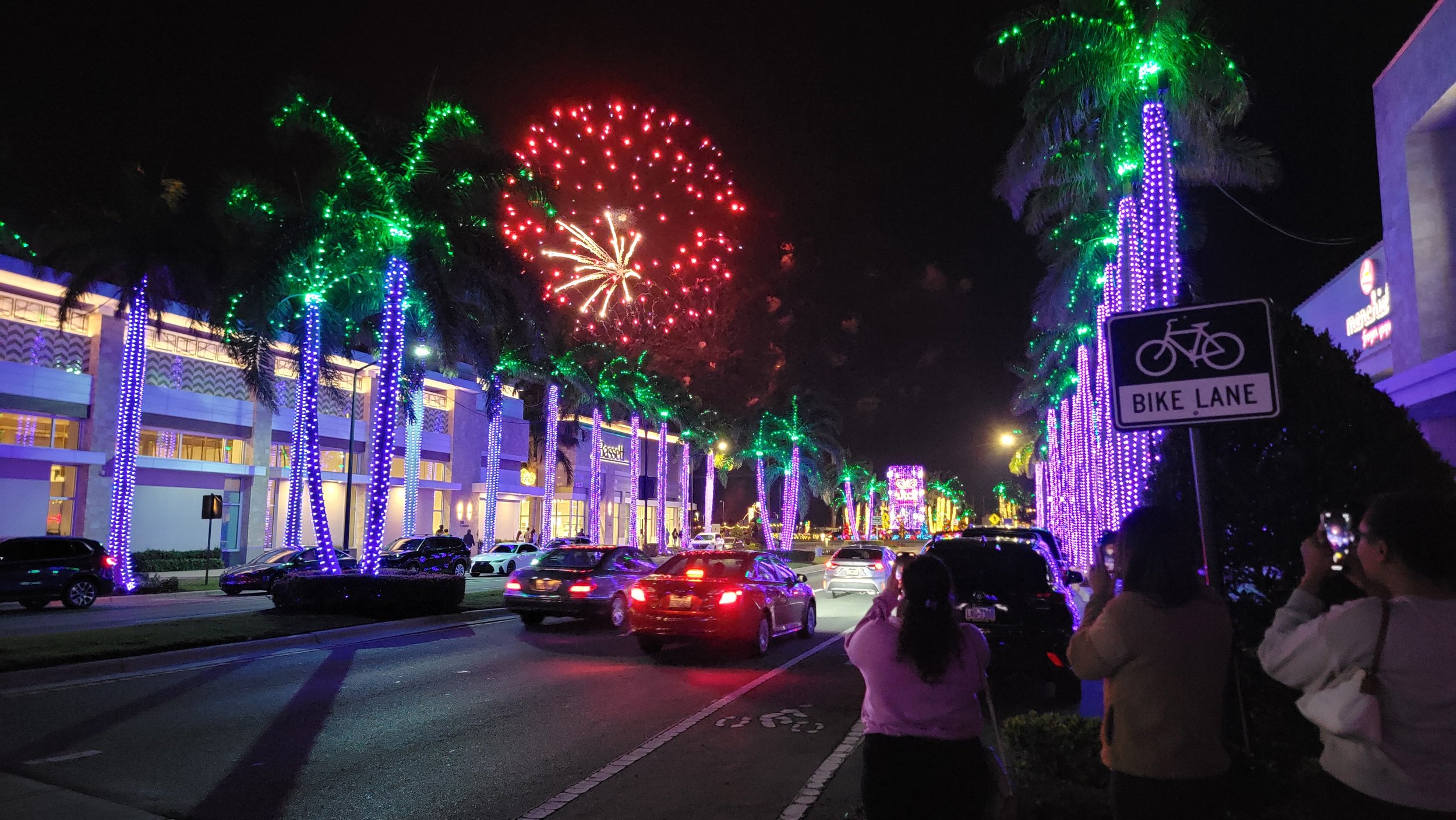

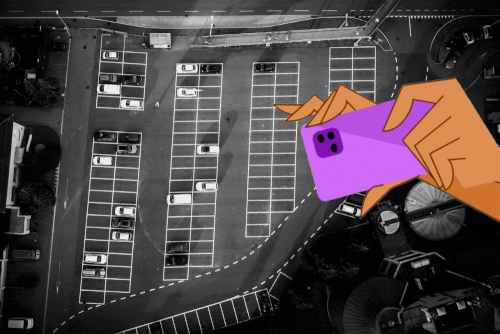
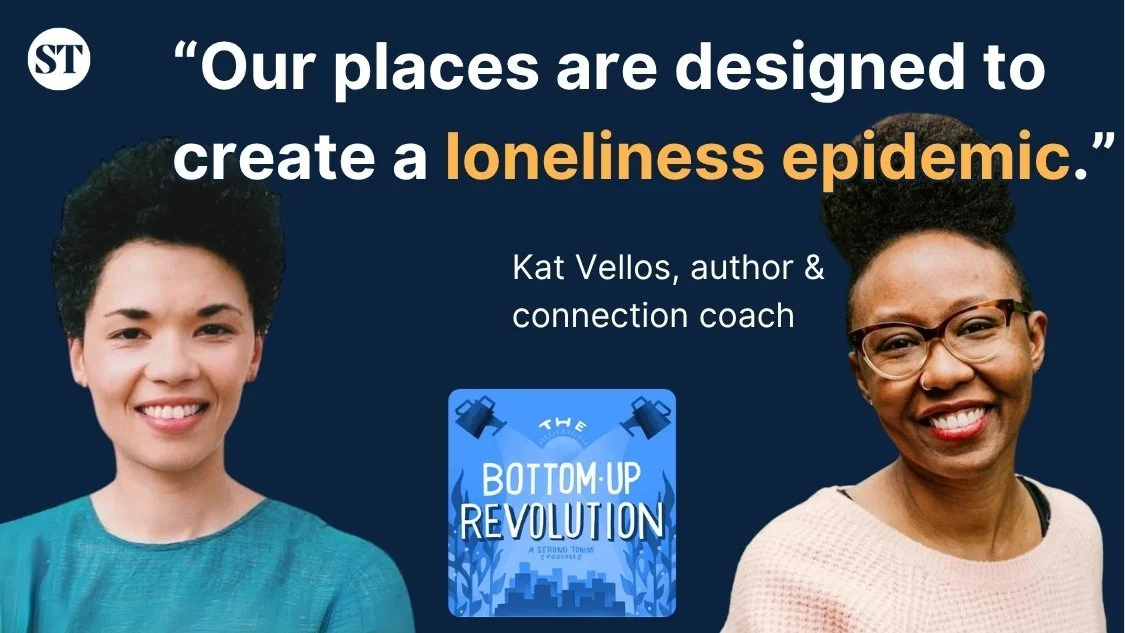


Design doesn’t just reflect our values — it forms them. If we want citizens who are engaged, generous, and resilient, we need places that cultivate those virtues.